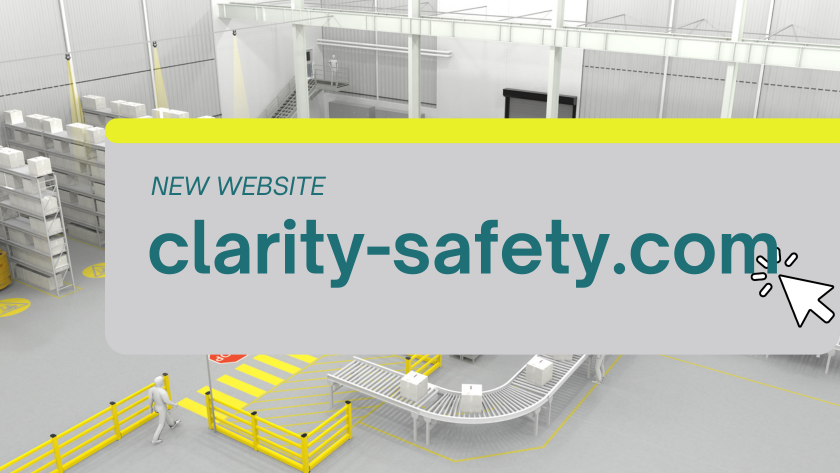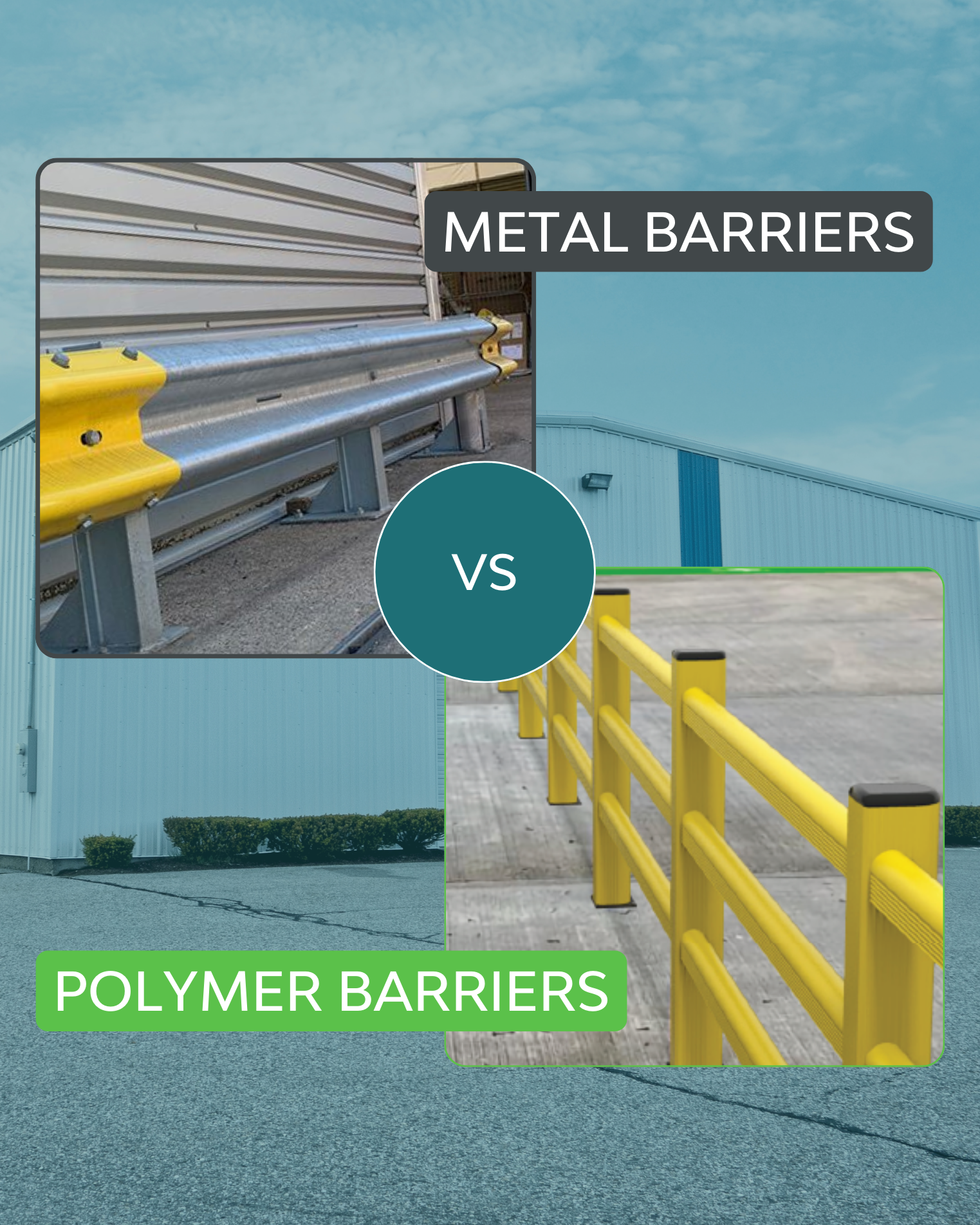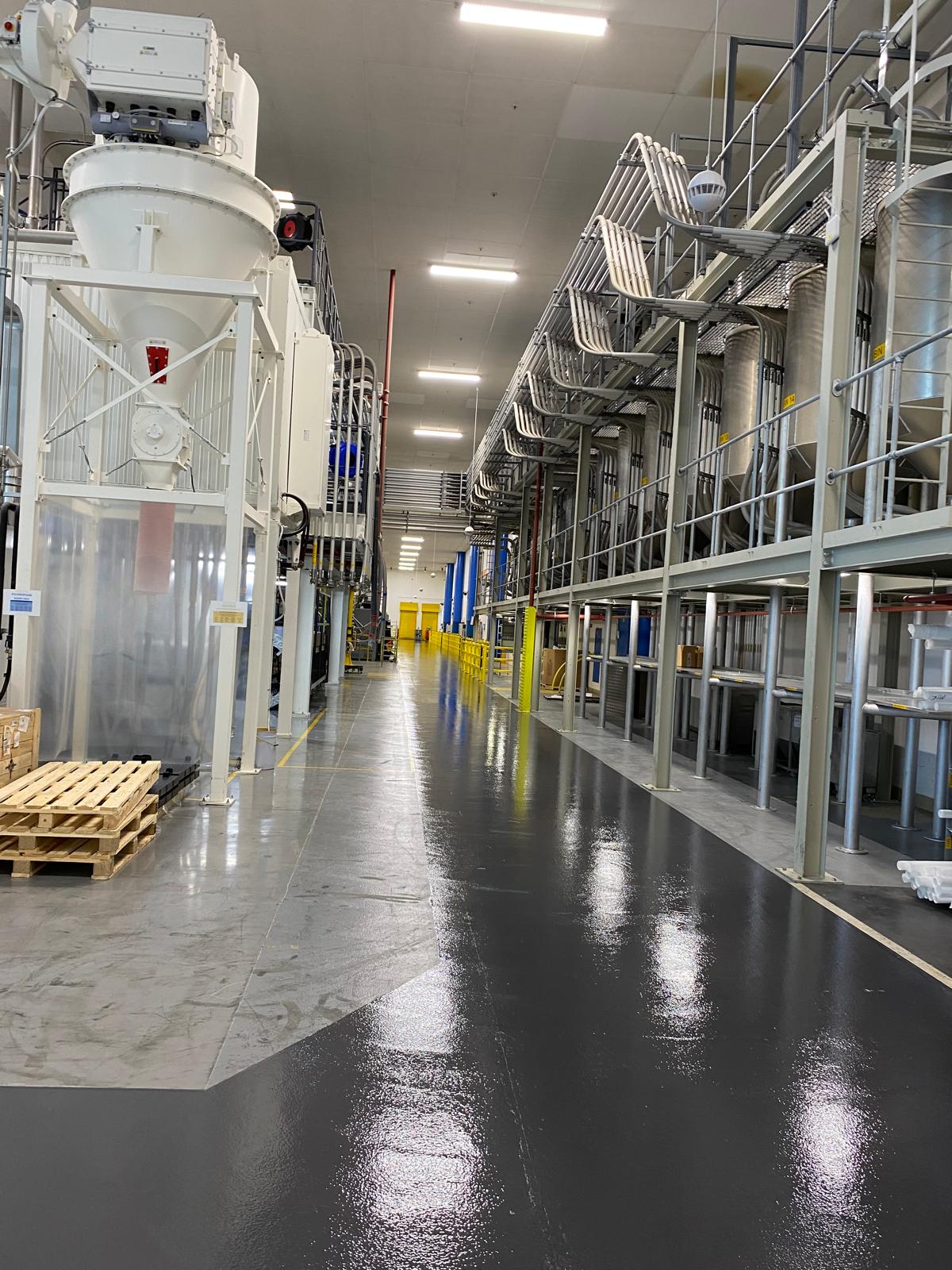What is a Polymer Safety Barrier?
 By
Alana Graham
·
2 minute read
By
Alana Graham
·
2 minute read
If you're managing a warehouse, logistics hub, or manufacturing facility, safety barriers are essential. But not all barriers are created equal. Traditional metal barriers might be familiar, but polymer safety barriers are fast becoming the preferred option for modern, safety-conscious sites.
What is a polymer safety barrier?
A polymer safety barrier is a type of impact protection system made from high-performance plastics such as PVC, polypropylene or HDPE. These barriers are engineered to flex under impact — absorbing energy and then returning to their original shape.
This makes them ideal for high-traffic environments like warehouses, forklift lanes, and loading bays. Where metal barriers bend or break (often damaging the floor and vehicle too), polymer systems bend and recover — minimising damage and downtime.
They’re also typically:
-
Lightweight
-
Easy to install
-
Highly visible
-
Low maintenance
-
Recyclable
At Clarity, we supply and install a range of flexible MPM barriers designed for both internal and external use.
Who are the biggest manufacturers?
There are three key players in the UK when it comes to polymer safety barriers:
MPM
MPM manufactures high-performance barriers made from modified PVC. Clarity is the UK distributor, offering full supply and install support. MPM barriers are known for:
-
High impact absorption
-
UV and chemical resistance
-
Class V0 fire resistance
-
Compact, modular designs
A-Safe
A-Safe is a manufacturer using HDPE to create round-profile barriers. Their products are widely used across manufacturing, logistics, and food production.
Boplan
Manufactured in Belgium, Boplan systems are also made from HDPE and are often specified for heavy-duty industrial environments.
Need a deeper comparison? Read: What are the best flexible barriers in the UK?
Advantages of polymer safety barriers
Polymer systems offer several key benefits:
-
Impact absorption: They flex under force and return to shape, protecting people, vehicles, and infrastructure.
-
Lower maintenance: No rust, repainting, or bolt replacements.
-
Cleaner appearance: Non-porous materials resist dirt and wipe down easily.
-
Modular and scalable: Easy to move, reconfigure, or extend as your layout evolves.
-
Cost-efficient over time: Fewer repairs mean reduced downtime and lower lifecycle cost.
-
Sustainable: Materials like PVC are recyclable and have a lower production footprint than steel.
Disadvantages of polymer safety barriers
No solution is perfect and polymer barriers do come with some considerations:
-
UV exposure: Some polymers degrade under prolonged sun exposure. MPM barriers are UV stabilised, making them suitable for external use — find out how here.
-
Upfront cost: Polymer barriers may have a higher initial price tag than steel. But long-term savings (on repairs, downtime, and replacements) typically outweigh this.
-
Surface cleaning: Light-coloured barriers can show surface grime, but this is easily resolved with a wipe down.
Polymer vs steel: which is better?
Steel barriers are still widely used and for good reason. They’re familiar, available from many stockists, and can offer strong, static protection in the right environment.
But in impact zones or high-traffic areas, polymer usually wins on safety, appearance, and total cost of ownership.
| Feature | Polymer Barriers | Steel Barriers |
|---|---|---|
| Impact Absorption | Yes | No |
| Floor Damage on Impact | Minimal | High risk |
| Corrosion Resistance | Excellent | Poor |
| Maintenance | Low | High |
| Reusability | Modular | Fixed |
| Visibility | Built-in colours | Needs painting |
Is a polymer barrier right for your site?
If you want to reduce repair bills, prevent downtime, and make your workplace visually safer, polymer barriers are a smart choice.
They’re especially effective in:
-
Busy forklift environments
-
Loading bays and traffic zones
-
Sites with pedestrian segregation needs
-
Facilities that value clean, modern appearance
Want help deciding?
Clarity offers full product comparisons, layout drawings, and even free site surveys. Let’s help you choose the right barrier for your space.






